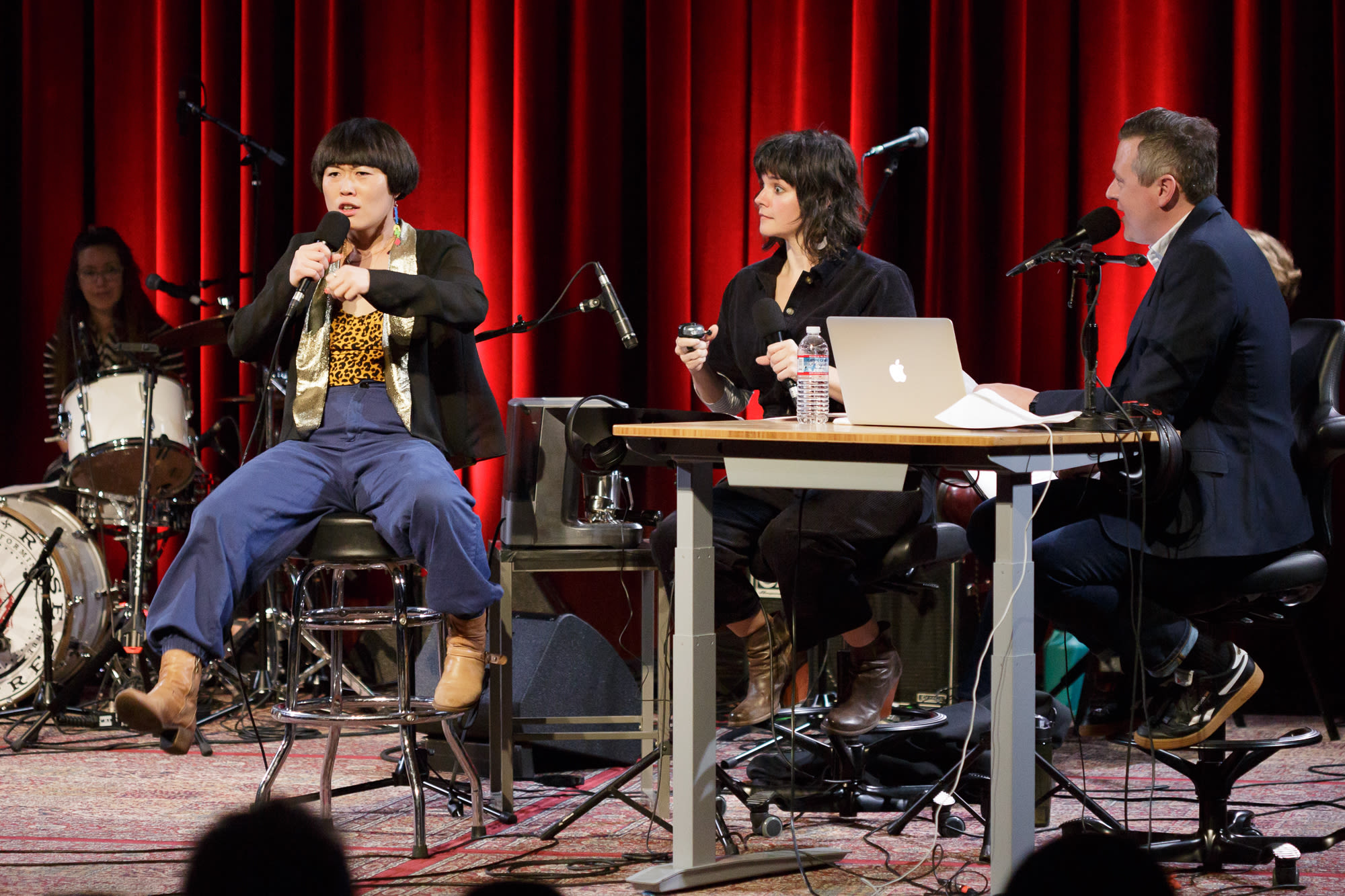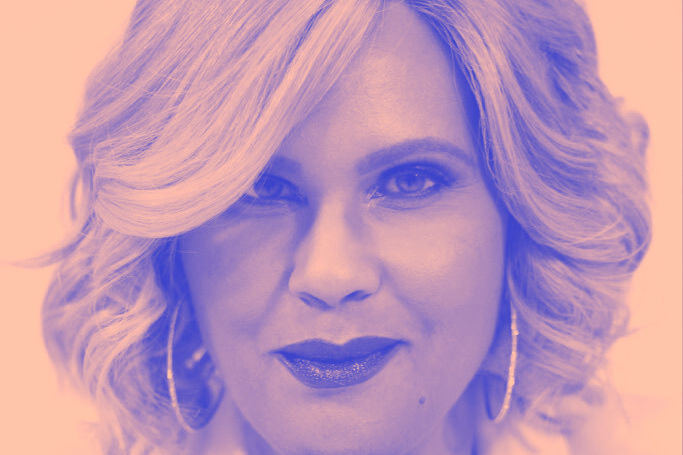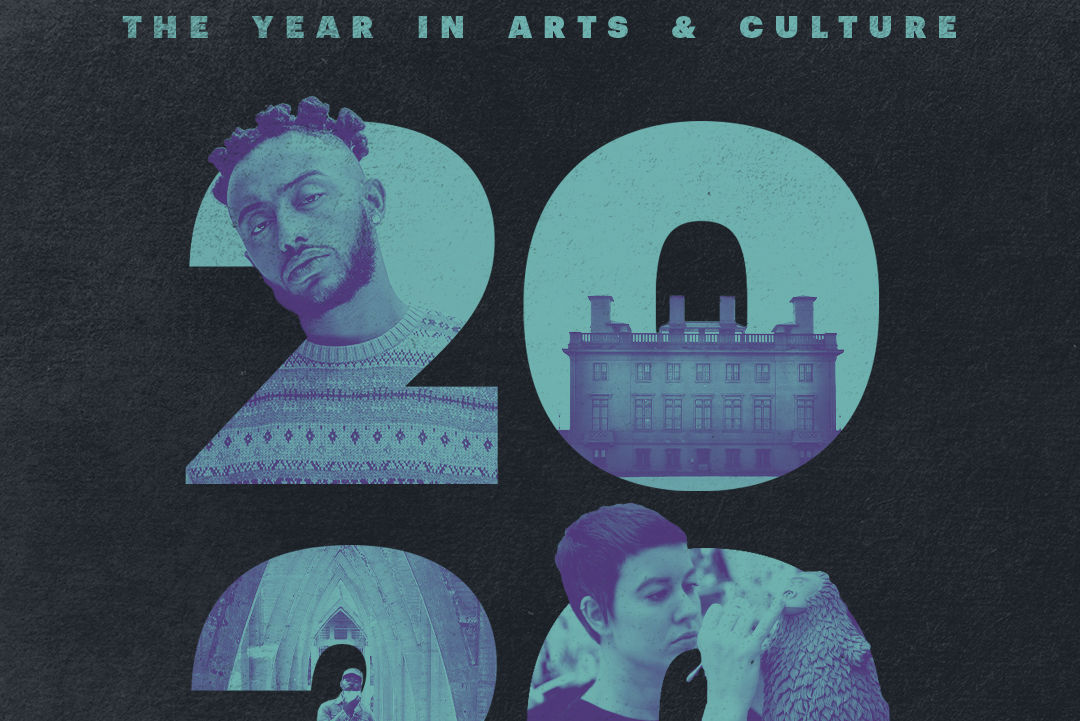Ira Glass Talks About His New Dance Show
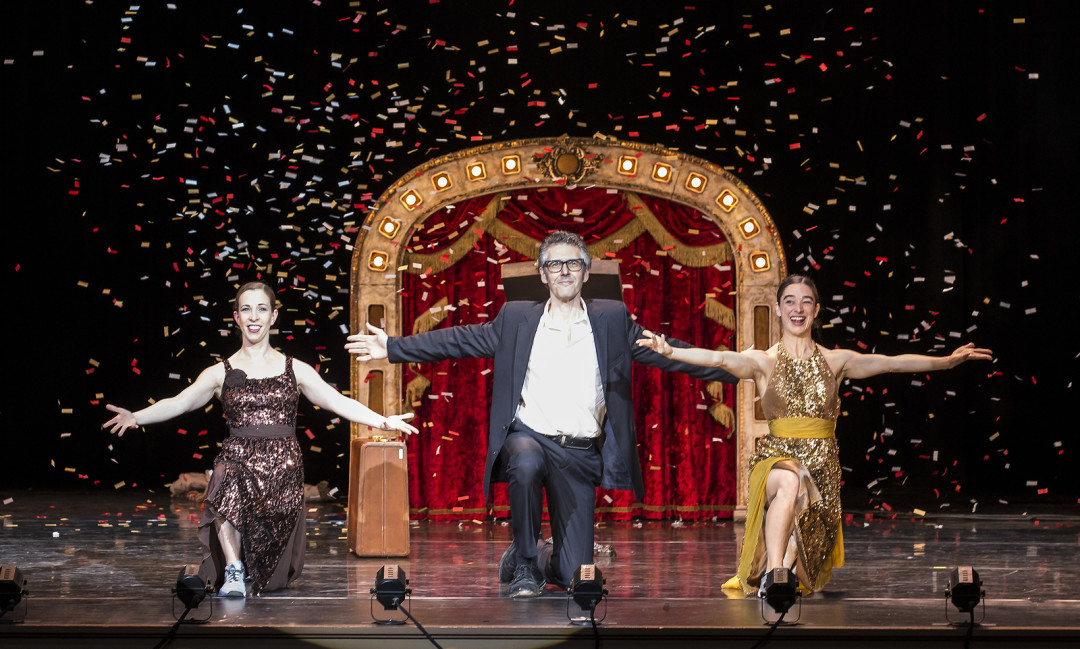
Ira Glass with Monica Bill Barnes and Anna Bass in Three Acts, Two Dancers, One Radio Host
Image: David Bazemore
Many of us know This American Life host Ira Glass by his voice—that nasal, wry, halting, excitable voice that stumbles so comfortingly into some 3.1 million pairs of ears each week. If you’ve seen the TAL TV show or one of his television appearances (The Simpsons?), you also know him by his glasses. But it’s unlikely you have any idea how he soft shoes or what his jazz hands look like.
That’s about to change (sort of). In June, Glass will grace the Schnitz with his new live show, Three Acts, Two Dancers, One Radio Host. He’s quick to point out no one listens to This American Life and thinks, “if only they had some dancers”—but nonetheless, he’s touring with the artistic director and namesake of Monica Bill Barnes & Company, as well as one of her dancers, Anna Bass, because they think it's sweet and hilarious.
I wanted to talk to him before the show sold out, so I gave him a ring to ask a couple of questions—why dance, what was it like being in Yoko Ono’s “Bad Dancer” music video, what public radio persona he would fear taking on in a dance-off?
[Disclosure: I worked for Glass and TAL in 2009. An edited version of this interview will appear in our Spring Arts Preview.]
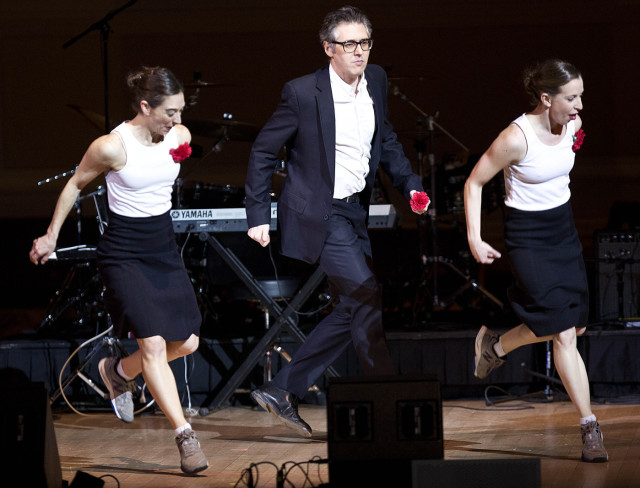
Image: Ebru YILDIZ
Radio and dance are not exactly an obvious marriage. How did this come about?
I saw Monica Bill Barnes Dance Company perform and had this experience that I never have at a dance show: it reminded me of our radio show. They were documenting small, very relatable human moments—moments of awkwardness, that feeling of the world getting better right this second. At the same time, they were very aggressively out for fun. That combination is what I shoot for in our radio show.
The thought I first had was: I should present these dancers to my audience, because I think the people who like our show will like these guys. We did the show [The Invisible Man Made Visible] on stage at a theater in New York City. Camera crews filmed the show and beamed it live and tens of thousands came out. It was a show with David Sedaris, Mike Birbiglia, David Rakoff—heavy hitters—and I have to say the dancers and [comedian] Tig Notaro really stole the show.
Monica said, “people want to see more of you, isn’t there some way that we could integrate you into the show.” So we tried to invent a thing where I would tell stories and they would dance, and that turned out to be enormously hilarious to us.
Three Acts, Two Dancers, One Radio Host
Arlene Schnitzer Concert Hall
June 21We put together an 11-minute piece, and through a fluke, my cousin Philip Glass asked me to be part of a fundraiser for the Tibet House at Carnegie Hall. I’d never performed anywhere for anyone, and we premiered our first event at Carnegie Hall. We were in a crazy line-up with Patti Smith and Jim James [of My Morning Jacket] and a bunch of Tibetan monks. And we killed; we totally killed.
Since Carnegie Hall, it’s been a steady progression downward to less prestigious theaters.
In terms of things that people fear most, dancing is right up there with speaking in public. Were you nervous?
Truthfully, we don’t talk about me dancing in the publicity of the show, so I will not confirm or deny. Mostly it’s me talking while they dance.
Okay, what about dancing on Yoko Ono’s video for “Bad Dancer?”
I did end up in that. There’s no denying that. That was another really weird experience. When you get a call from Yoko Ono’s people saying Yoko Ono has a new music video, who says no to that.
I know I’m a bad dancer. I’m in my 50s, I’ve never been athletic, I don’t have any illusions about it at all. It’s something I one-hundred percent embraced.
Did they just put you in a room and tell you to dance?
I’ve written about this on the website. A car comes and picks you up and takes you to a very nothing-looking building, and then I was shown into a room and there’s 15 or 20 good looking, younger people. And then they introduce you to Yoko Ono, who’s a short lady in her 70s, and she said to me, “thank you for your work,” which either meant she knew my work or she did not know my work. And she was utterly polite and proper.
Then they say, “Glass you’re on next,” and then you go up in front of all these people who seem like they could dance, truthfully, and then you’re supposed to dance. I thought, well, it’s a music video, so they’ll just take snippits, and the name of the song is “Bad Dancer,” so you can be a bad dancer. And I feel like I am an enthusiastic and bad dancer.
This American Life has now passed the 500-episode mark. Do you ever get bored? Does being in a live show re-invigorate things for you?
I never get bored. That said, it’s super fun doing something you haven’t done. It’s fun being on stage. Doing this show is so different from doing the radio show in such a sweet, hilarious way.
How so? What do you get from it that you don’t get from radio?
The radio show continues to be interesting and difficult. As the show has gone on, we take on harder things and big issues in a way we never could have in the early years of the show.
Last year we spent three reporters to a school in Chicago that had experienced 29 shootings, and we sent them there for five months. That’s a huge investment of time and reporting skill and just figuring out how to do a show like that. It’s hard. It’s not the sort of thing we usually do; it’s not the sort of thing anyone usually does.
Then also we’ll take on something that’s a lark. Last month we did a show where basically we went to one car dealership on Long Island, and we followed while they tried to sell their quota of cars for the month—129 cars—and they had such trouble doing it. It was just watching this very simple human drama unfold. There’s nothing fancy or super classy about that, but it’s really fun to do. So on the radio show, we’re always trying to find new things to do and to document that haven’t been documented.
And then something like this—I love being in a show that’s so unlike the radio show, but is also something like the radio show. For the dance show, I tell stories, I play clips and music, and it feels just like the radio show. Sometimes it’s just the dancers, sometimes it’s just me, and sometimes it’s all of us together. We have props, there’re lighting cues I have to hit, there’re costume changes. It’s like, “I’m in a show! We’re putting on a show!” The only experience I’ve had with this is in high school, so that’s a lot of fun.
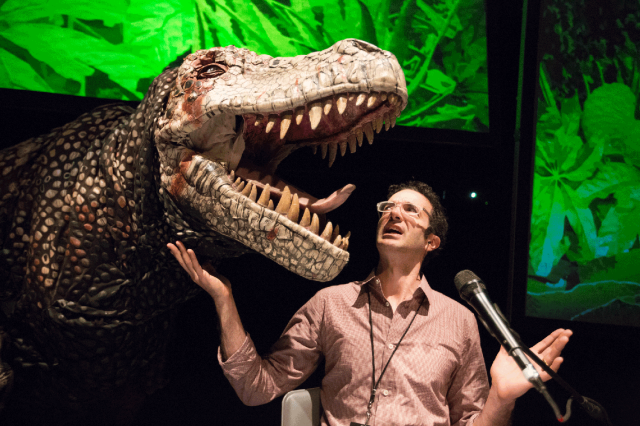
Radiolab host Jad Abumrad and T. Rex in Apocalyptical.
Image: Jared Kelly
Radiolab just came through with their Apocalyptical show. Is there an arms race to create the best live show between you guys?
Our show is much better than Apocalyptical. That show is nothing compared to our show. What do they have? Dinosaurs. Projections. We have dancers. Those guys don’t know anything about putting on a show.
I’m just kidding. Those guys put on an excellent show. And our show is so radically different.
As an East Coast Jew growing up in the ‘60s and ‘70s in Baltimore, the records that were around the house were Broadway albums. My parents would take us to shows when they toured through town. And the aesthetics of those shows—where they’re funny, they’re emotional, they’re about something bigger, there’s song and dance—until I came up with format for TAL, I was searching for something that would have the feeling of those old Broadway shows. TAL comes closer than anything I’ve ever worked on.
I feel like the dance thing gets one step closer, and we’re hoping to do a Broadway run this summer.
Has it changed how you see music and dance?
It’s totally changed how I see dance. I saw Singing in the Rain over Christmas. I don’t think I’d ever seen the entire film, and I had a whole new admiration for it.
In one crazy sequence with the three leads—Debbie Reynolds, Gene Kelly, and that guy, the sidekick guy—where they march onto screen, the camera’s completely stationary, and march up the stairs in unison on the beat, and do a thing on one of the steps, and then march down and back up. They do it three times really fast. I was like, “Oh my God!”
And then I saw an interview with Debbie Reynolds—because I’m now a dance nerd—where she said she had never danced professionally or been in a musical. She was like 17-years-old when they shot that film. She had been training for 17 months, and that was the very first scene they shot. She had never danced professionally, and she was dancing with Gene Kelly in Singing in the Rain!
When you see her do it, you’re like, “nice job, teenager, good for you.” I don’t think I would’ve understood just how amazing that was.

Image: Ebru YILDIZ
How did Portland get picked for a performance ahead of so many bigger cities?
We knew there were a lot of public radio fans. I feel like the target audience for it is people who like the radio show, and it’s just like the radio show, plus dancing. Which I know no one is asking for. We know that there’s nobody in the audience who’s like, “I really like that show, if only they had some dancers.”
Do you have a favorite Oregon story from the TAL archives?
That’s really interesting. Hold on, I’m just going to do a quick search…No. And I won’t pander to the people of Portland with an empty local angle quote that so many visiting writers and public radio professionals serve up in what I feel is a condescending way when they come through. I will not condescend. I have no local color to provide.
In a dance-off, which public radio host would you put your money on?
Who’re we talking: me, Terry Gross, who’s up?
You, Terry Gross, Peter Sagal, Steve Inskeep, Renee Montagne…
Everyone you’re naming, I could beat. But who I would be scared of is that Ari Shapiro. I know that he can sing, so he probably can dance. The only threat is Ari Shapiro.

